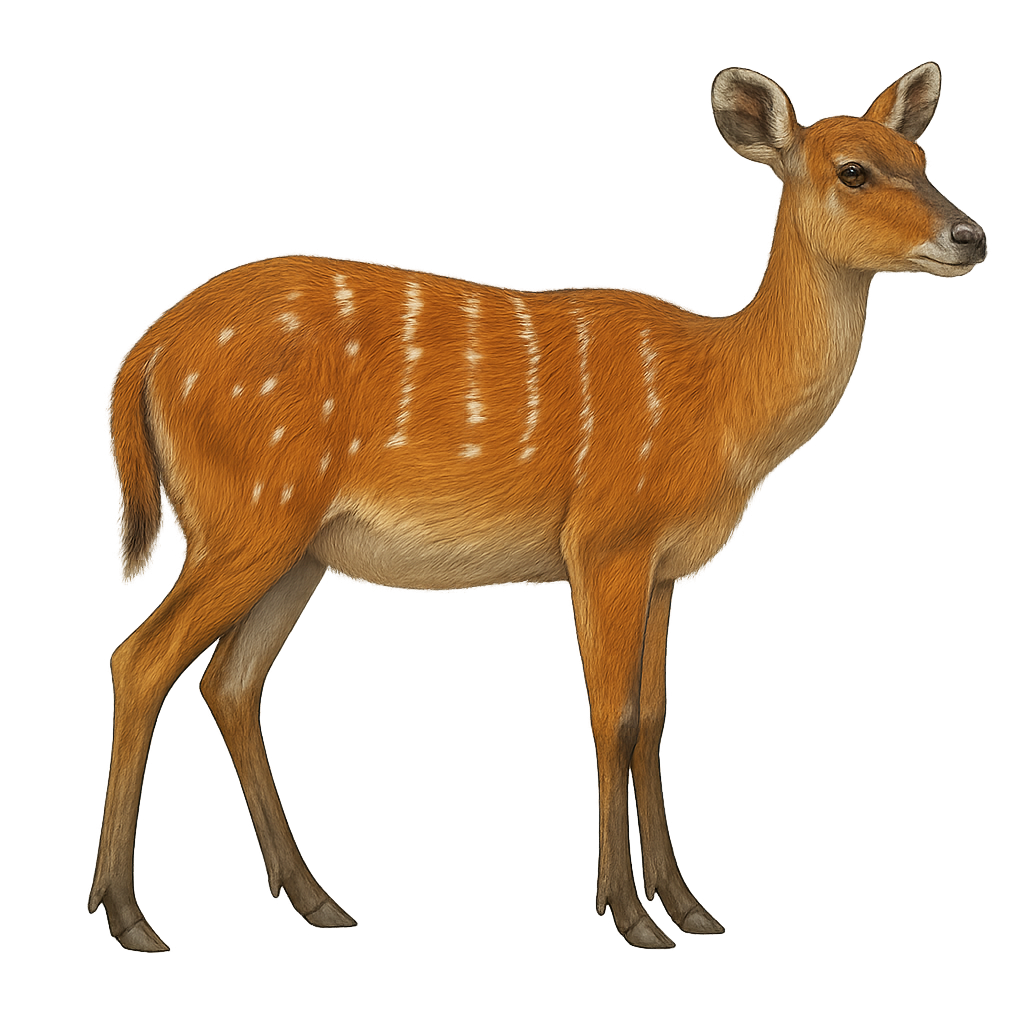Your wildlife photography guide.
Explore the sitatunga in detail, study its behavior, prepare your shots.
Where to observe and photograph the sitatunga in the wild
Learn where and when to spot the sitatunga in the wild, how to identify the species based on distinctive features, and what natural environments it inhabits. The WildlifePhotographer app offers tailored photography tips that reflect the sitatunga’s behavior, helping you capture better wildlife images. Explore the full species profile for key information including description, habitat, active periods, and approach techniques.
Sitatunga
Scientific name: Tragelaphus spekii

IUCN Status: Least Concern
Family: BOVIDAE
Group: Mammals
Sensitivity to human approach: Very shy
Minimum approach distance: 20 m
Rut period: September to November
Gestation: 220-240 jours
Births: April to June
Habitat:
Marshes, wetlands, flooded forests
Activity period :
Mainly active at night, generally discreet during the day.
Identification and description:
The sitatunga, or Tragelaphus spekii, is a semi-aquatic antelope found mainly in the marshes and wetlands of Central and East Africa. It is easily recognizable by its reddish-brown coat, vertical white stripes, and long spiraled horns in males. Sitatungas are well adapted to their aquatic habitat, with long, splayed hooves that allow them to move easily through swamps. They are primarily active at dawn and dusk, feeding on aquatic plants, grasses, and leaves. Sitatungas are shy and elusive animals, preferring to remain hidden in dense vegetation to avoid predators.
Recommended lens:
400 mm – adjust based on distance, desired framing (portrait or habitat), and approach conditions.
Photography tips:
To photograph the sitatunga, it is essential to remain discreet and patient. These antelopes are very shy and prefer dense, wet areas. Use a telephoto lens of 400mm or more to capture images from a distance without disturbing them. Opt for morning or evening hours when the light is soft and sitatungas are more active. Stay still and silent to avoid scaring them away. Marshes and wetlands often offer unique opportunities to capture interesting reflections and light plays.
The WildlifePhotographer App is coming soon!
Be the first to explore the best nature spots, track rutting seasons, log your observations, and observe more wildlife.
Already 1 439 wildlife lovers subscribed worldwide

